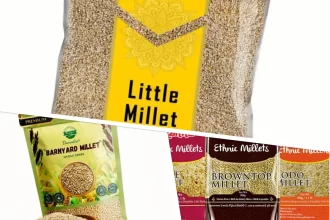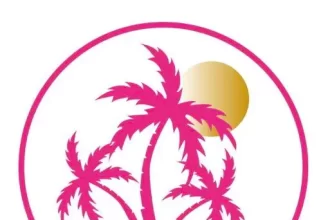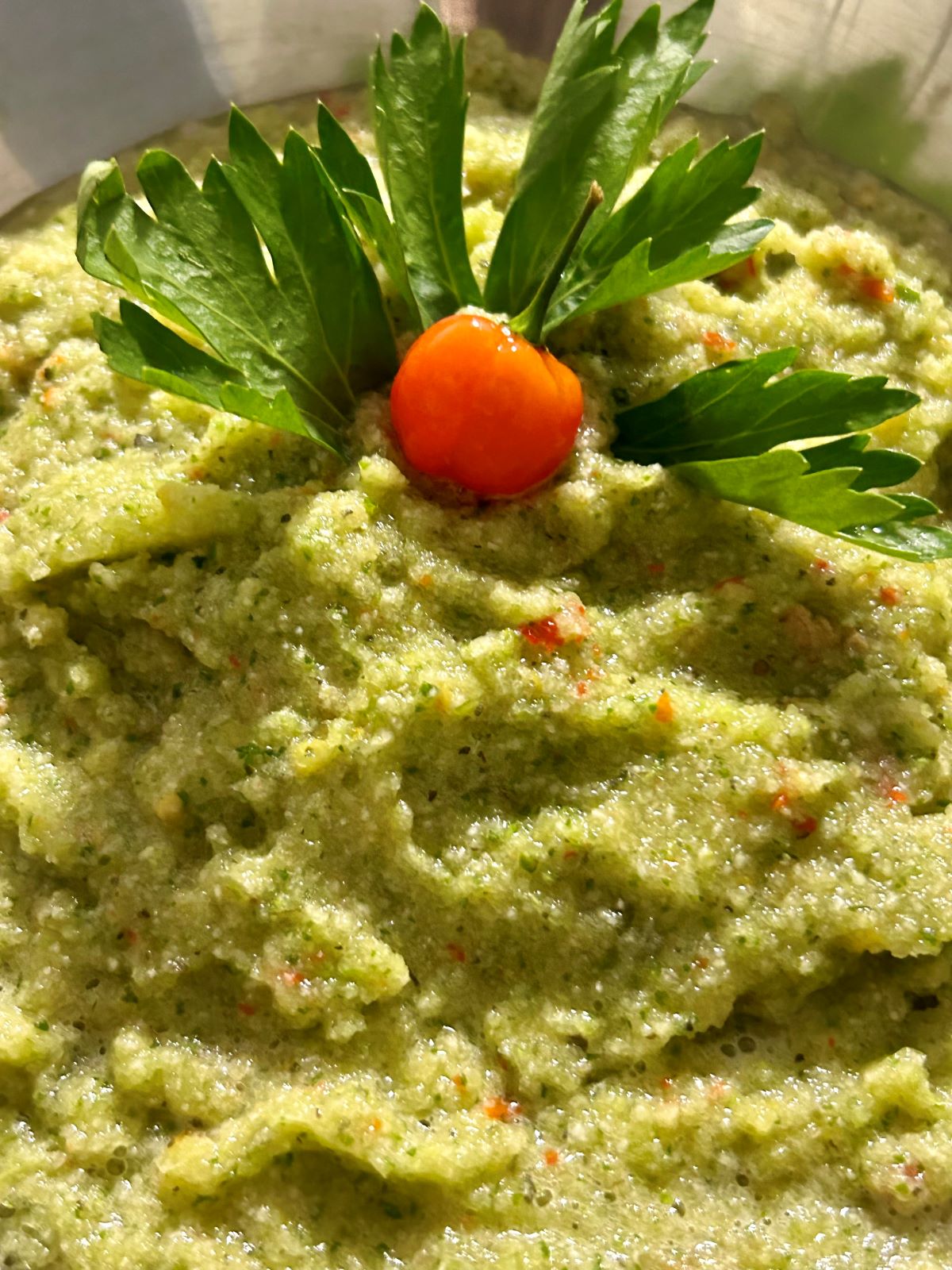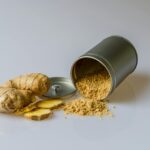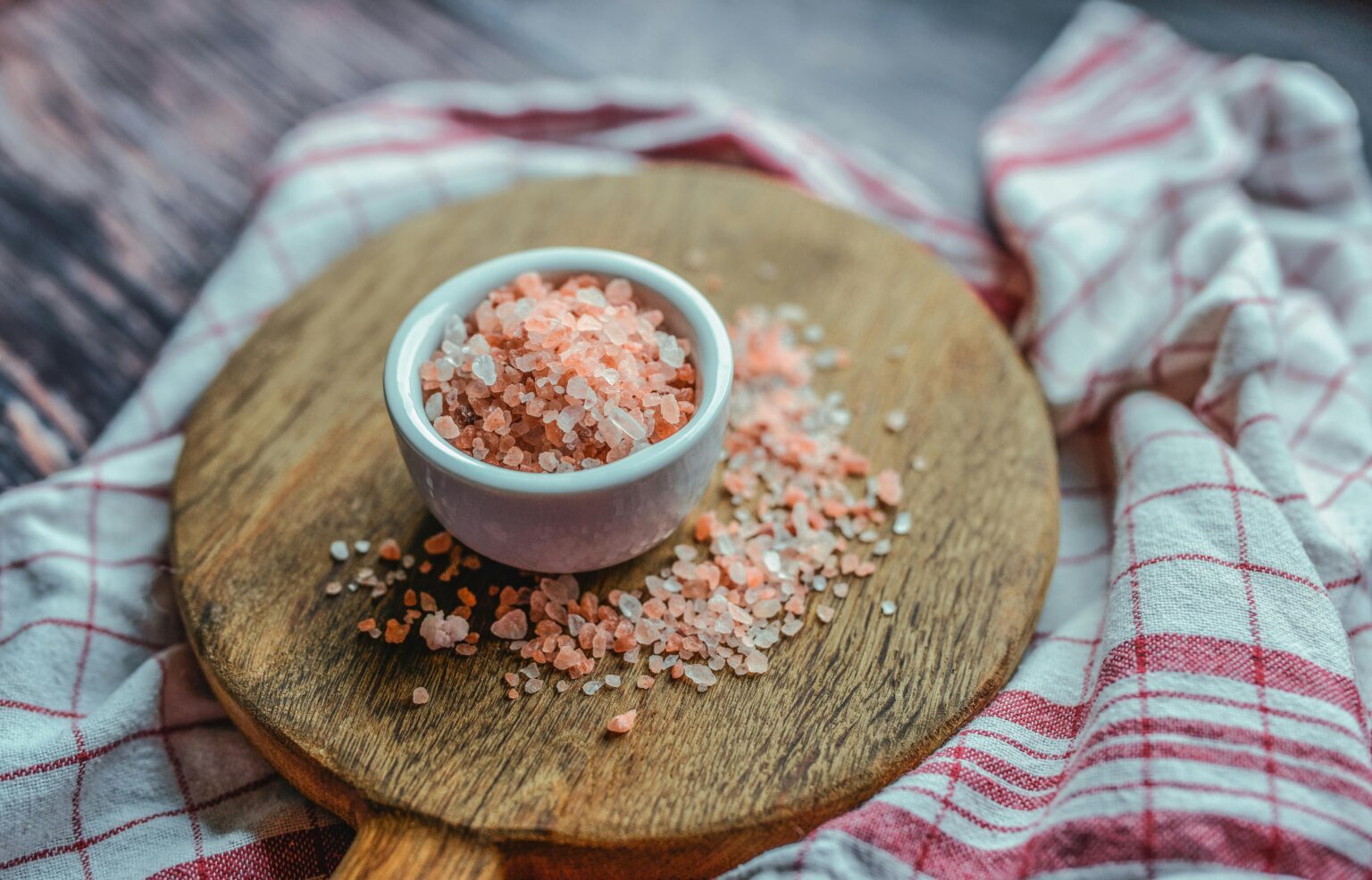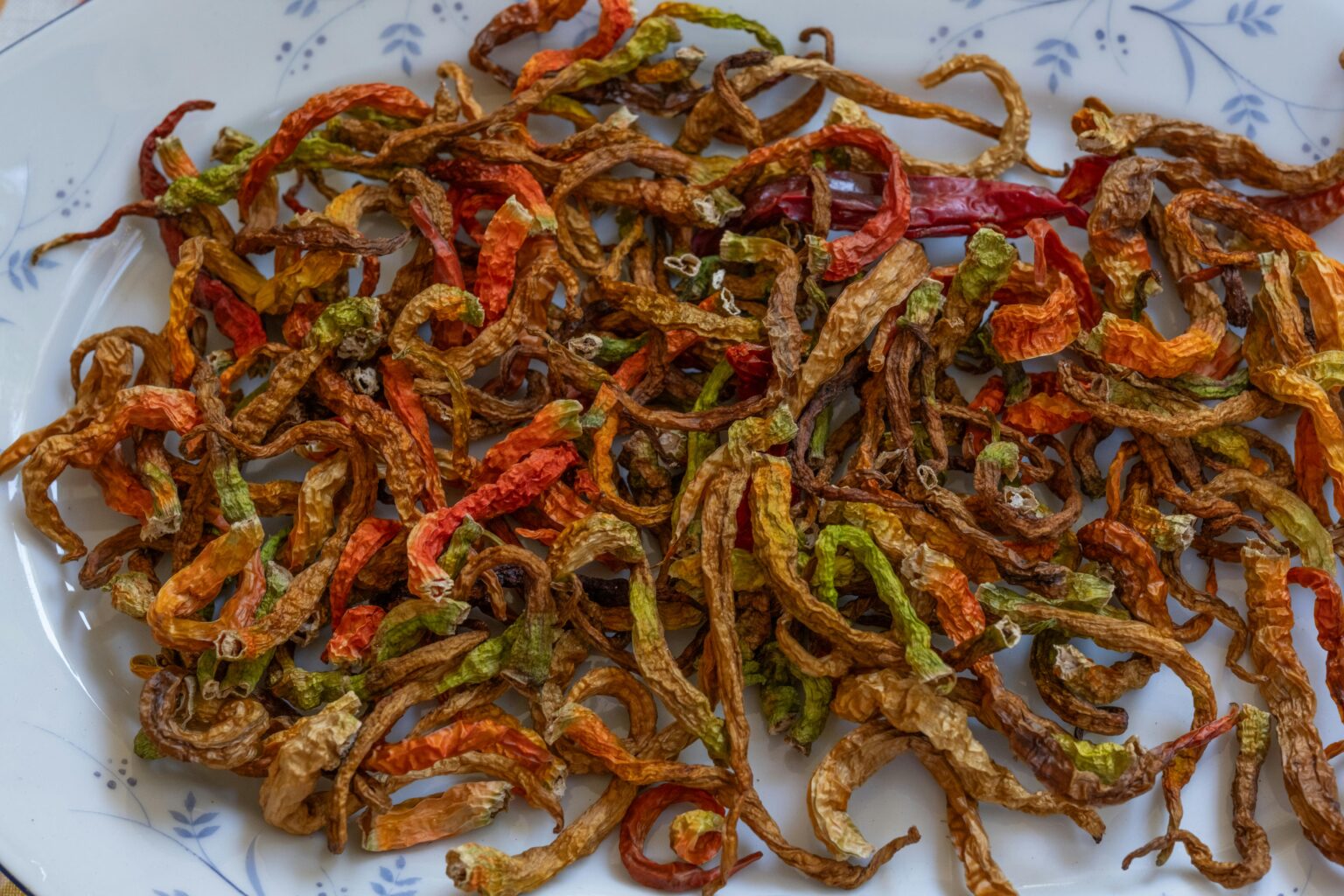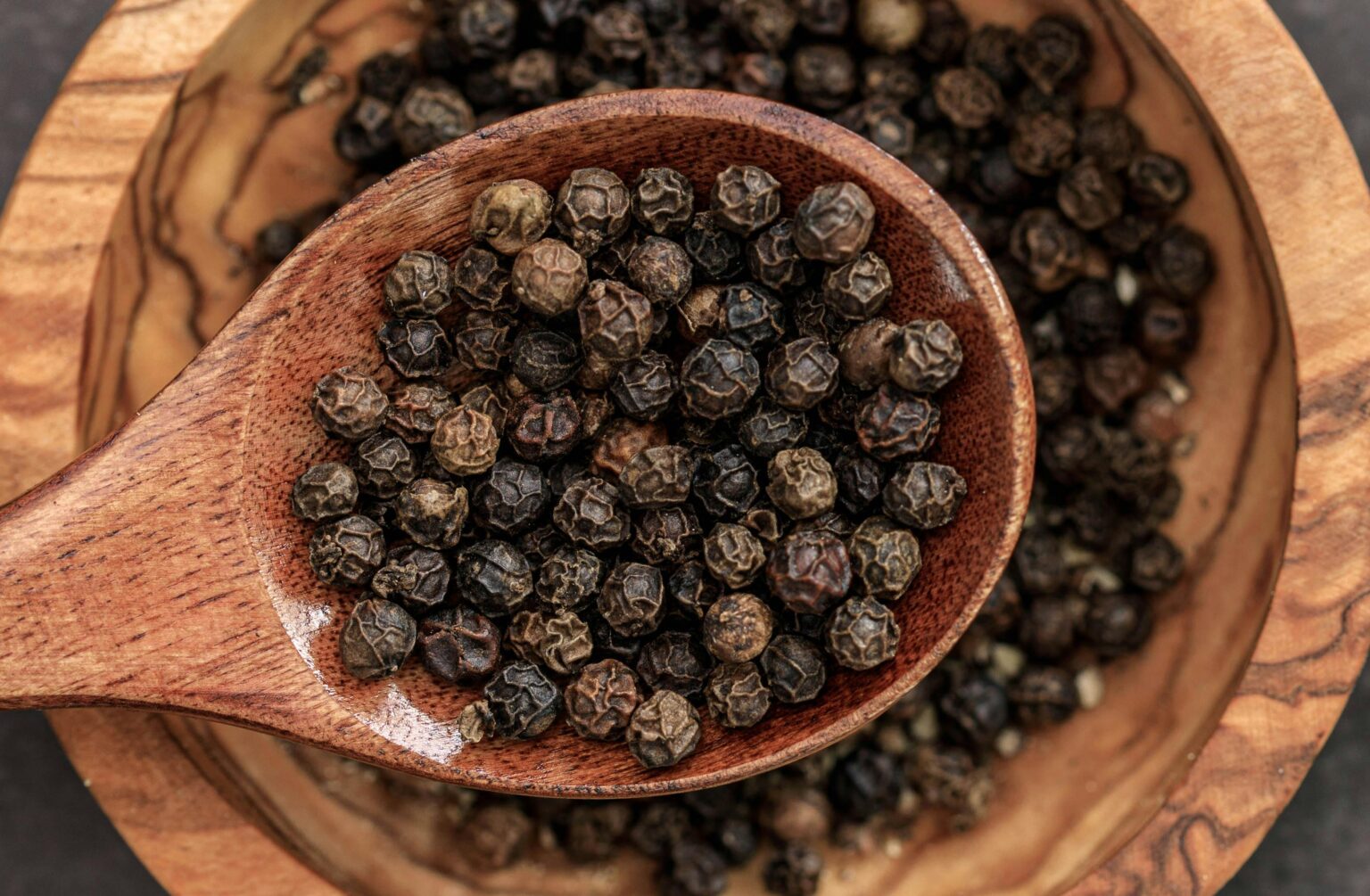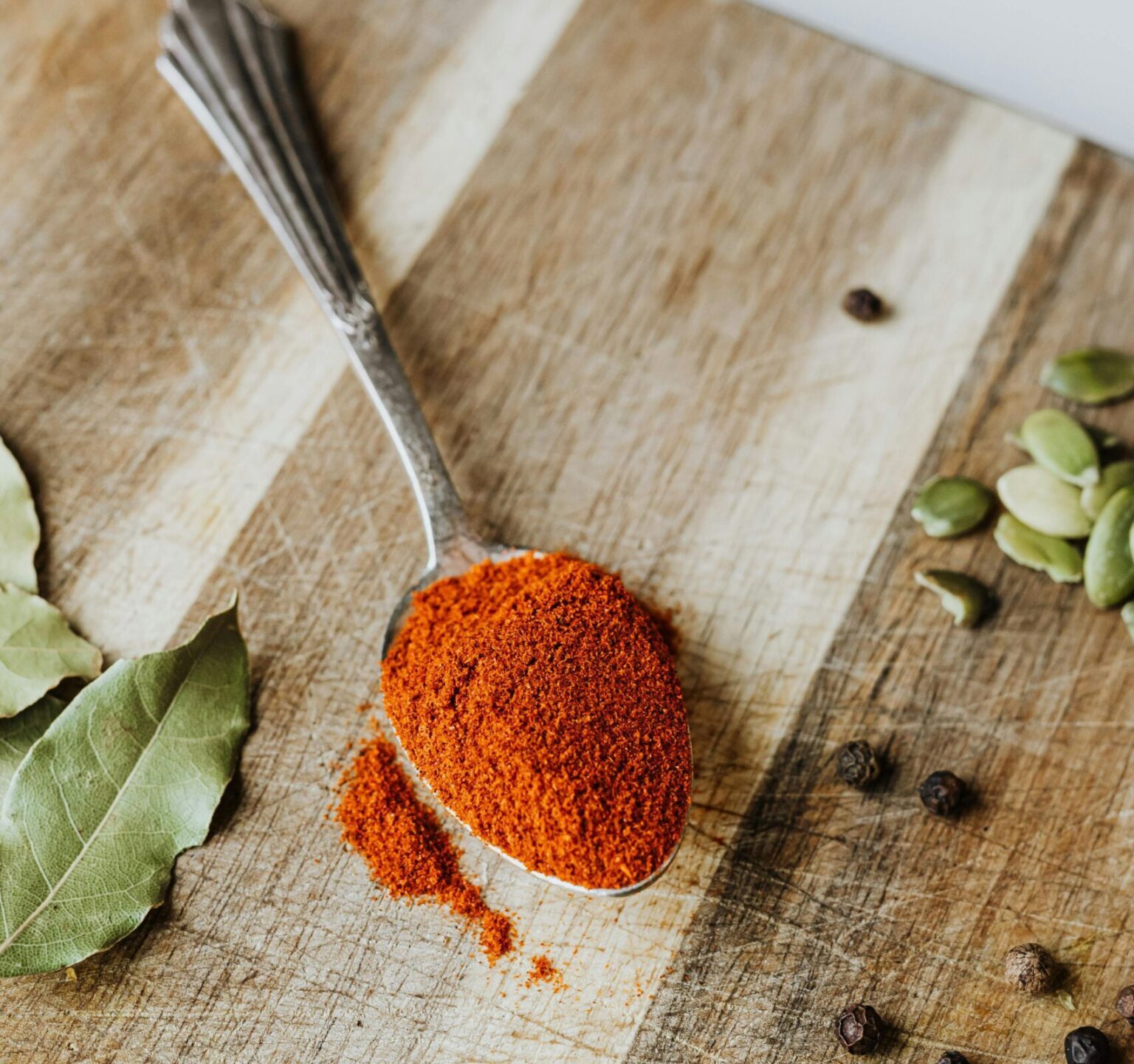Green seasoning is the secret weapon in Caribbean cooking. It gives your food that extra kick you can’t quite put your finger on. Green seasoning is the base for many dishes. Whether you’re cooking meat, seafood, or veggies, a dollop of green seasoning makes it taste real good. Make your batch ahead of time, keep it in the fridge or freezer, and you’re good to go when you’re ready to cook.
Key Ingredients in Green Seasoning
Green seasoning is made with a few key ingredients, but every batch is different because it depends on what herbs you get and what’s fresh at the market. Some people like it spicy, others prefer it mild. Here’s a quick rundown of the base ingredients:
Trinidadian green seasoning uses pimento peppers. These peppers give plenty of flavor without the heat. If you can’t find Trinidadian pimento, Cubanelle peppers are a good substitute. Some versions of green seasoning have celery, ginger root, and bell peppers. I like to add Guyanese wiri wiri peppers, Scotch bonnets and red chili peppers to mine.
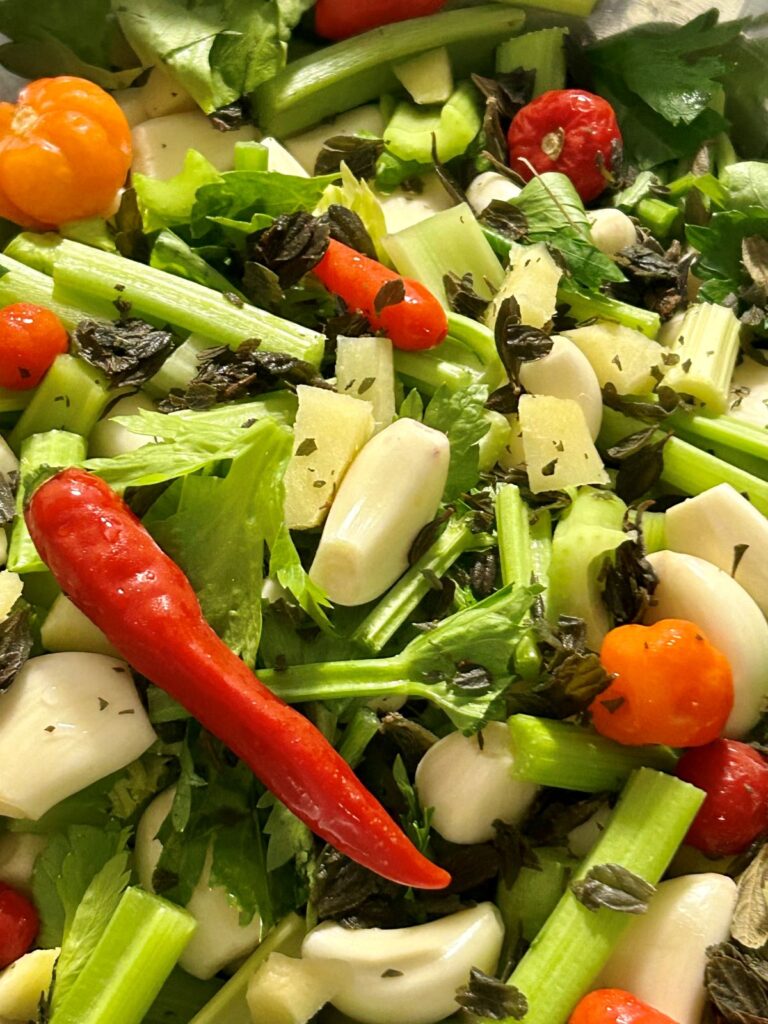
What is Green Seasoning?
Green seasoning is a blend of of onion, garlic, pepper, scallions, culantro, thyme, and basil, with variations depending on available herbs and personal taste.
Green Seasoning Vs. Other Caribbean Seasoning Pastes
If you’ve ever strolled through a Caribbean market, you’ve probably seen a variety of seasoning pastes that look similar but have their own unique twists. Each one tells the story of its origin, with flavors that make every dish unforgettable.
Take Haitian epis, for example. It’s made with onion, garlic, hot pepper, and herbs, and has a tangy kick from lime juice or vinegar. This gives Haitian dishes a vibrant and zesty flavor.
Then there’s sofrito, a staple in many Latin Caribbean kitchens. It starts with a base of onion, garlic, and peppers, just like green seasoning. But sofrito stands out with its addition of tomato paste or fresh tomatoes, adding a rich, savory depth to the mix.
Recaito, on the other hand, might look just like green seasoning at first glance. But once you taste it, you’ll notice it lacks the spicy kick. It’s a milder, aromatic blend, perfect for those who love the green seasoning flavor without the heat.
Each Caribbean country has its own version of these pastes, and even within the same country, recipes can vary from family to family. Whether it’s the addition of celery, ginger root, or different types of peppers, these variations are what make Caribbean cuisine so diverse and exciting.
How to Make Green Seasoning
Traditionally, people used to mash de ingredients in a mortar and pestle or on a sil and lorha. Nowadays, a blender or food processor does make de job easier. A blender gives a smoother texture, while a food processor gives more control over the texture. Pulse until you reach the consistency you like. Finely minced is good for rice, soups, and veggies.
Wash and roughly chop all ingredients, then place them into a blender or food processor. For a blender, blitz on high for a smooth consistency, adding olive oil or water if needed, or pulse for a semi-smooth texture. In a food processor with an S blade, process until the herbs are broken down to your desired texture, pulsing and scraping the sides as necessary, and adding water or olive oil if needed. Transfer the mixture into a mason jar or ice cube tray and refrigerate or freeze as desired.
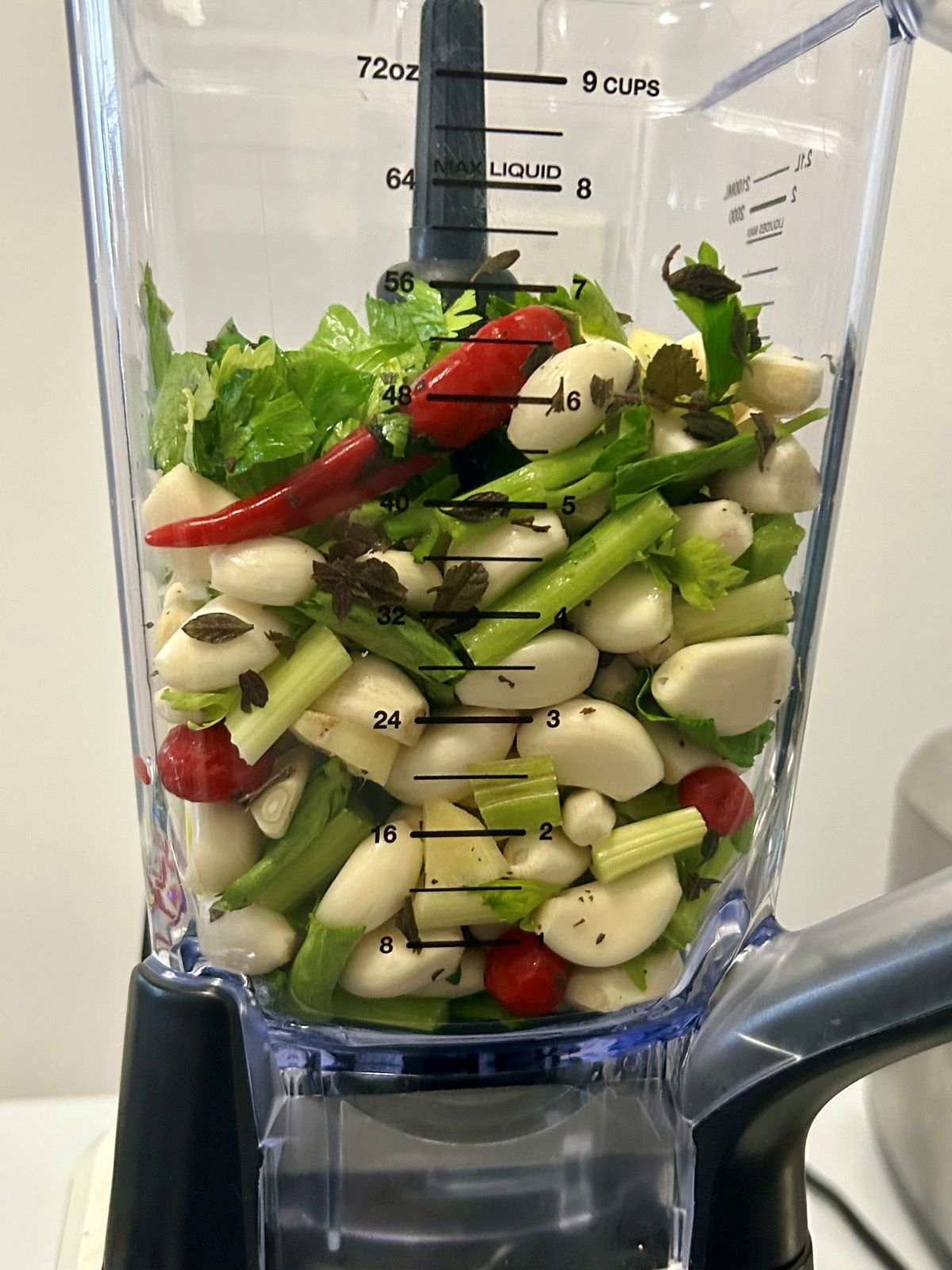
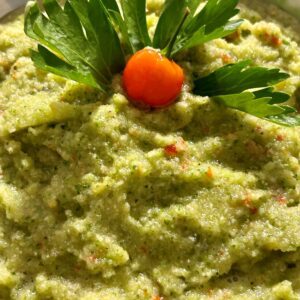
Guyanese Green Seasoning
Ingredients
- 2-3 bunches of fresh herbs thyme, parsley, culantro, and/or shado beni
- 1 large bunch of scallions green onions, roughly chopped
- 1 large onion roughly chopped
- 1 head of garlic peeled
- 2-3 hot peppers Wiri Wiri or Scotch bonnet, stems removed
- 1 red chili pepper
- 3-4 stalks of celery roughly chopped
- ¼ cup oil vegetable, olive, or your preference
- Salt to taste
Instructions
- Prep Your Ingredients: Wash all the fresh herbs thoroughly to remove any dirt. Peel the garlic and chop the onion and celery into manageable pieces for the blender.
- Blend It Up: Add all the ingredients into a blender. If you prefer a chunky texture, pulse the blender until you reach your desired consistency. For a smoother paste, blend until everything is well combined. If the mixture is too thick, you can add a little water or more oil to help it blend.2-3 bunches of fresh herbs, 1 large bunch of scallions, 1 large onion, 1 head of garlic, 2-3 hot peppers, 1 red chili pepper, 3-4 stalks of celery, 1/4 cup oil
- Season It: Taste your green seasoning and add salt as needed. Remember, this mixture will be used to season your dishes, so you want it flavorful but not overly salty.Salt to taste
- Store It: Transfer the green seasoning to a clean, airtight container and store it in the refrigerator. It should last for about a week. You can also freeze it in ice cube trays for longer storage.
How to Store Green Seasoning
Green seasoning will last about 2 weeks in the fridge or up to 6 months in the freezer. Keep it in a mason jar in the fridge door. If it gets a deeper green color over time, it’s just the garlic oxidizing, nothing to worry about.
The trick is after you make the seasoning, use a small spoon to fill a silicone ice cube tray. Cover it with plastic wrap to avoid freezer burn. Once frozen, pop the cubes out and put them in a freezer bag. They’ll last about 6 months. When you’re ready to cook, add the frozen seasoning straight to your hot pan. For meat or fish, let the cubes thaw for a few minutes or microwave them for a minute to soften up.
Substituting Ingredients
Certain herbs can be hard to find in regular grocery stores, but there are substitutions that work. Guyanese broad leaf thyme, Spanish thyme, and Cuban oregano can be replaced with American thyme. Remove the leaves from the stem before adding to the food processor. Culantro, known as shado beni or bandhania, can be found in Asian, Caribbean, or Hispanic markets. Cilantro is a good substitute since they taste similar. Guyanese marimanpoke, a type of basil, can be replaced with American basil or Thai basil.
Share Your Recipes
Share your tips, tricks, and green seasoning in the comments below!
Green Seasoning Recipe FAQs
Can I use dried herbs instead of fresh?
Fresh herbs are preferred for the best flavor and aroma, but if you must use dried herbs, use them sparingly as they are more concentrated.
What if I can’t find all the herbs listed?
Substitute with whatever fresh herbs you have on hand. Essential herbs include onion, garlic, and peppers. Basil or parsley can be good replacements.
Can I adjust the spice level?
Absolutely! Add more hot peppers for extra heat or reduce the amount for a milder seasoning.
How long does the green seasoning last in the fridge?
It will last for about two weeks in the refrigerator when stored in an airtight container.
Can I freeze the green seasoning?
Yes! Freeze it in ice cube trays for up to 6 months. This allows you to use it in convenient portions.
What type of oil should I use?
Use any neutral oil like vegetable or olive oil. You can even use flavored oils if you want to add an extra layer of taste.
Can I make this recipe in advance?
Definitely! Making it ahead of time is great for meal prepping. Just store it properly in the fridge or freezer.
What if my blender or food processor isn’t powerful enough?
If the mixture is too thick, add a little water or more oil to help it blend smoothly.
Can I use this seasoning for any type of cuisine?
While it’s a Caribbean staple, green seasoning can be used to add flavor to a variety of dishes, including meats, seafood, and vegetables.
How can I make the seasoning less chunky?
Blend it longer for a smoother consistency. If using a food processor, keep processing until the herbs are finely minced.




